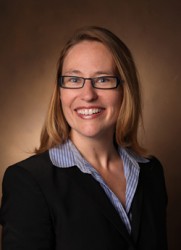
More than a third of community college entrants nationally are required to take remedial courses once in college, thereby delaying student progress toward completing a degree.
Researchers at Vanderbilt University’s Peabody College of education and human development and Harvard University’s Center for Education Policy Research conducted an evaluation of Tennessee’s innovative solution to remediation’s costly delay: the Seamless Alignment and Integrated Learning Support program. SAILS is an online remedial math course that students complete during their senior year of high school to avoid having to take math remediation in college.
Angela Boatman, assistant professor of public policy and higher education in the Department of Leadership, Policy and Organizations at Peabody, was on the research team. The study finds that although the SAILS program successfully eliminated students’ delay in entering college-level courses, the program did not improve students’ math achievement nor boost their likelihood of passing college math. The program had a positive impact on credit accumulation by the end of the second year in college.
The team examined the program’s impact under two distinct policy environments: during 2013–14 when Tennessee required pre-requisite remediation, and during 2014–15 and 2015–16 when the state changed to a co-requisite remediation model, in which students enrolled in remedial math simultaneously with college-level math.
To account for other policy changes in Tennessee—such as the introduction of free community tuition in 2014—the researchers took advantage of the staggered timing of the SAILS implementation across the state and compared same-year changes for SAILS-participating and non-participating high schools. They also compared the outcomes of students immediately above and below the ACT Math cutoff score used to identify which students would require remediation.
Among the key findings:
Under Tennessee’s pre-requisite policy, the SAILS program allowed students to enroll in college-level math at higher rates and accumulate additional credits. During the first year in community college, SAILS participants were 29 percentage points more likely to enroll in college math. Roughly half of those students passed the course, amounting to a 13 percentage point increase in the percentage of community college students statewide who passed college math by the end of their first year. However, the impacts on college math enrollment and completion were smaller by the second year, as students from non-participating high schools completed their pre-requisite remediation and caught up. By the end of their second year in college, SAILS participants also completed additional college credits—4.5 credits or 1.5 courses—compared to their counterparts from non-SAILS high schools.
After the co-requisite policy was introduced, SAILS no longer had an impact on students’ taking or passing college math during their first year of community college, nor on the total number of credits completed at the end of their second year. In lifting the barrier to entry into college-level courses, the state’s co-requisite policy largely supplanted the SAILS program by allowing students to do their remediation alongside college-level courses. Even though SAILS allowed students to avoid taking remedial classes concurrently with their college classes, there is no evidence that SAILS impacted the number of college credits students completed under the co-requisite policy.
The SAILS program did not improve students’ math achievement nor boost their likelihood of passing college math upon taking the course. SAILS participation did not improve performance on a test administered to students immediately above and below the remediation ACT Math cutoff score. About half of the new students who enrolled in college math as a result of SAILS passed the course during their first year in college. The passing rates for SAILS graduates were not higher than for students with similar ACT scores who had not taken SAILS.
SAILS improved students’ perceptions of the usefulness and enjoyment of math. Students just below the ACT Math cutoff score of 19 (out of 36) were 6.5 percentage points more likely than those just above the cutoff score—who did not participate in SAILS—to perceive that their math course content would be useful in their careers, 10 percentage points more likely to indicate they were better prepared for college math, and 6 percentage points more likely to say that they were interested in math than those immediately above the remediation threshold, who took a different, non-SAILS high school math course. The impacts were particularly large for black students.
Collaborators include Vanderbilt doctoral student Chris Bennett and Harvard researchers Thomas J. Kane, Whitney Kozakowski, Rachel Hitch and Dana Weisenfeld.